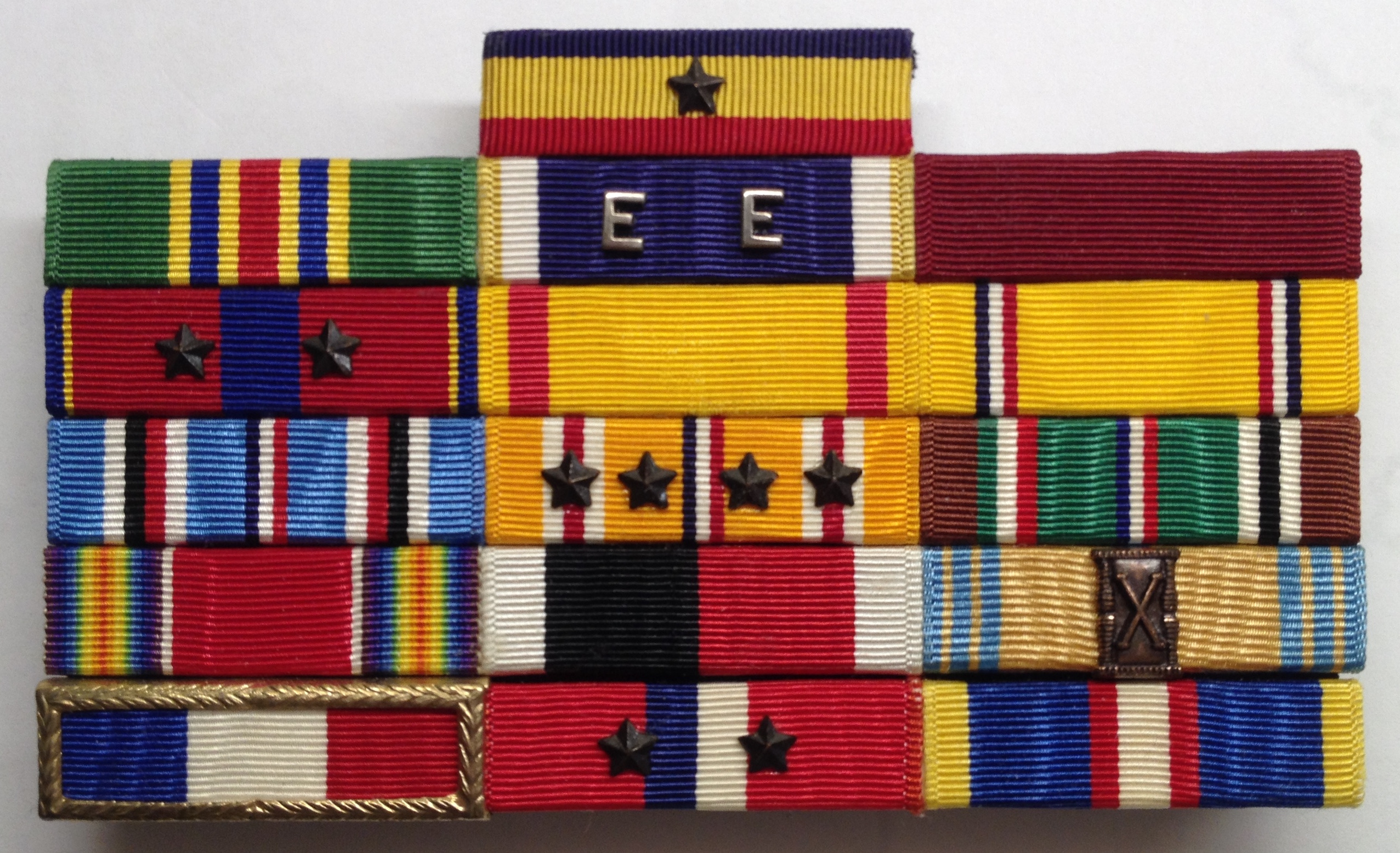For Memorial Day, I'm writing a bit about the role of John W. Moore, Jr. in World War II. The photo shows the medals that he earned in the war and during his subsequent service in a Naval Reserve Construction Battalion (SeaBees), eventually earning the rank of Chief Warrant Officer (CWO-4).
He enlisted in 1944, four days after his seventeenth birthday. The completion of his basic training coincided with the entry into the war of CV-12, the USS Hornet, where he was posted as a Fireman and an Electrician's Mate. The Hornet was the 8th ship with that name in the history of the U.S. Navy. (The 7th Hornet launched the famous Doolittle Raid of Tokyo, but was sunk during the campaign for Guadalcanal Island.)
The Hornet operated for 16 continuous months without ever touching land, sometimes as close as 40 miles from the Japanese homeland. She was attacked by air 59 times, including kamikaze attacks at Okinawa, but was never hit. Her aircraft participated in the attack that sunk the Yamato, the largest battleship ever built. She was forced out of service only in June 1945 after a typhoon crumpled her flight deck.
The sole ribbon in the top row of the medals is the Presidential Unit Citation, awarded to the Hornet and its crew for "extraordinary heroism". The medal is intended to recognize a level of combat heroism similar to what would earn an individual the Navy Cross. The leftmost ribbon in the second row is the Navy Meritorious Unit Commendation, again a group citation, but at the same level as the Bronze Star.
Skipping the next medal for a moment... The red ribbon at the right of the second row is the Good Conduct Medal
Skipping to the middle and right medal on the third row... These are the China Service Medal and the American Defense Service Medal, both awarded to everyone who served in those places.
The three medals on the fourth row represent participation in the American, Asiatic/Pacific, and European/African/Middle Eastern theatres during the war. The four campaign stars on the Asiatic/Pacific medal represent participation in four of the 48 official campaigns of the war in the Pacific.
On the fifth row, the medal on the left commemorates victory in World War II. The one in the middle was for participation in the post-war occupation of the defeated opponents.
The three medals on the bottom row are actually medals awarded by the Republic of the Philippines in gratitude for their liberation.
The medals that I skipped over were awarded for post-war service in the Naval Reserve. Of these the middle one on the second row is important. The two letters "E" indicate that twice, my father's SeaBee unit won battle efficiency competitions, indicating exceptional preparation for active duty if necessary.
The leftmost ribbon, with two stars, on the third row, is equivalent to the Good Conduct Medal, but for reservists. The right-most ribbon on the fifth row, the one with the hourglass, indicates more than ten years of service in the reserves.
